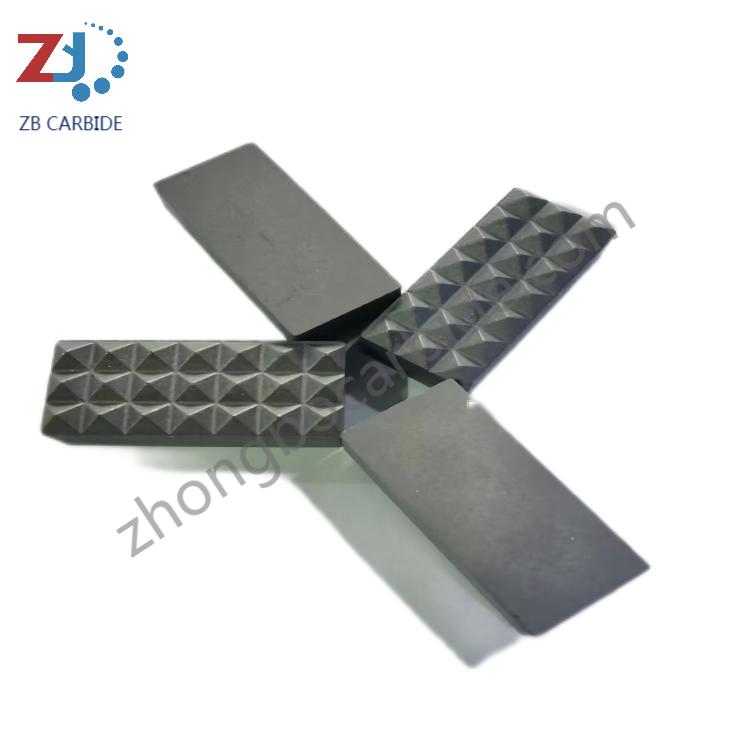Carbide grippers are indispensable tools in various industries, providing a secure grip and reliable performance in gripping, holding, and positioning applications. Whether used in manufacturing, machining, robotics, or automotive industries, carbide grippers play a vital role in ensuring efficiency and precision in production processes. Proper maintenance and care are essential to maximize the lifespan of carbide grippers, ensuring optimal performance and longevity. In this comprehensive guide, we'll explore the key steps to properly maintain and care for your carbide gripper, helping you extend its lifespan and minimize downtime.
Carbide grippers, also known as carbide-tipped gripper inserts or carbide jaw inserts, are precision-engineered components designed to provide superior gripping strength and wear resistance. They typically consist of a metal body with carbide tips or inserts strategically placed along the gripping surface. Carbide, a compound of carbon and other elements such as tungsten or titanium, is renowned for its hardness, durability, and resistance to wear, making it an ideal material for gripping applications.
Importance of Proper Maintenance and Care
Proper maintenance and care are essential to ensure the continued performance and longevity of carbide grippers. Neglecting maintenance can lead to premature wear, reduced gripping efficiency, and potential damage to workpieces or machinery. By following a regular maintenance routine and implementing proper care practices, you can extend the lifespan of your carbide gripper and maximize its productivity and reliability.
Key Maintenance Steps for Carbide Grippers
1.Regular Cleaning
Remove debris, coolant residue, and other contaminants from the gripper surfaces using a soft-bristled brush or compressed air. Avoid using abrasive materials or harsh chemicals that may damage the carbide inserts or metal body.
2.Inspection and Assessment
Periodically inspect the carbide inserts for signs of wear, chipping, or damage. Pay attention to the gripping surfaces and edges, as these areas are most susceptible to wear during use. Replace any worn or damaged inserts promptly to maintain optimal gripping performance.
3.Lubrication
Apply a thin layer of lubricant or anti-seize compound to the gripper surfaces to reduce friction and prevent galling or seizing. Use lubricants specifically formulated for use with carbide materials to avoid compatibility issues or adverse effects on performance.
4.Tightening and Adjustment
Check the fasteners, screws, or clamps securing the carbide inserts to the gripper body regularly. Ensure they are tightened to the manufacturer's recommended torque specifications to prevent loosening or detachment during operation. Make any necessary adjustments to maintain proper alignment and contact between the inserts and workpieces.

5.Storage and Handling
Store carbide grippers in a clean, dry environment away from moisture, humidity, and extreme temperatures. Use protective covers or containers to prevent damage to the inserts and metal body during storage or transportation. Handle carbide grippers with care to avoid dropping or mishandling, which can cause chipping or breakage of the inserts.
6.Sharpening and Resurfacing
When the carbide inserts become dull or worn beyond repair, consider sharpening or resurfacing them to restore their gripping performance. Consult with a qualified technician or service provider experienced in carbide tooling to ensure proper sharpening techniques and equipment are used.
7.Replacement of Worn Inserts
As carbide inserts wear over time, they may need to be replaced to maintain optimal gripping performance. Keep a supply of replacement inserts on hand and follow the manufacturer's recommendations for installation and alignment. Dispose of worn inserts properly according to local regulations for handling carbide materials.
Common Care Practices to Extend Lifespan
In addition to regular maintenance steps, there are several common care practices that can help extend the lifespan of carbide grippers:
●Avoid Overloading: Do not exceed the recommended maximum load capacity of the carbide gripper, as this can cause excessive wear and damage to the inserts and metal body.
●Use Proper Workholding Techniques: Follow proper workholding techniques and procedures to ensure even distribution of force and minimize stress on the gripper inserts. Avoid slamming or impacting the gripper against hard surfaces, as this can cause chipping or breakage of the carbide inserts.
●Monitor Cutting Conditions: Pay attention to cutting conditions such as feed rates, speeds, and material types when using carbide grippers in machining or cutting applications. Adjust cutting parameters as needed to optimize performance and minimize wear on the gripper inserts.
●Perform Routine Inspections: Conduct regular visual inspections of the carbide gripper before and after each use to identify any signs of wear, damage, or misalignment. Address any issues promptly to prevent further damage and ensure continued performance.
●Train Operators: Provide proper training and instruction to operators on the correct use, handling, and maintenance of carbide grippers. Emphasize the importance of following manufacturer recommendations and best practices to maximize the lifespan and efficiency of the grippers.
Conclusion
Proper maintenance and care are essential for maximizing the lifespan and performance of carbide grippers in various industrial applications. By following a regular maintenance routine, conducting routine inspections, and implementing common care practices, you can ensure that your carbide grippers remain in optimal condition and continue to provide reliable gripping performance. Investing time and effort in maintaining and caring for your carbide grippers will pay off in the form of extended lifespan, reduced downtime, and improved productivity in your operations.
























